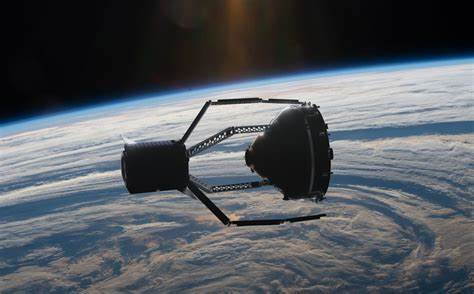Space Debris Targeted for Orbital Cleanup Struck by Unknown Object, Raises Concerns

An ambitious plan to clean up the growing problem of space debris has faced a setback. The space debris, intended to be captured and removed by the ClearSpace-1 mission, has been hit by another unidentified object, causing damage, and complicating the cleanup mission.
Space Debris Struck by Unknown Object
In an unexpected turn of events, the space debris known as VESPA, originally launched in 2013, has been struck by an unknown object. The debris, weighing 113 kg and measuring two meters in diameter, has been in orbit between 660 km and 790 km above Earth.
According to a recent press release by the European Space Agency (ESA), VESPA was slated to be captured and removed as part of the ClearSpace-1 mission, an “active debris removal mission” announced in May 2023. The plan was for ClearSpace-1 to rendezvous with VESPA, seize it, and then burn up during reentry, taking both the debris and itself out of orbit. This collision with an unknown object has introduced complications to this mission and throws its feasibility into question.
ClearSpace-1 Mission in Doubt
The ESA’s Space Debris Office received information from the United States 18th Space Defense Squadron on August 10, 2023, stating that new objects have been detected near the payload adapter of VESPA. This news raises doubts about the viability and timeline of the ClearSpace-1 mission.
The ESA is still in the process of collecting additional data on this unforeseen event, a process that will take several weeks. However, the agency remains committed to the ClearSpace-1 mission despite the setback. The collision underscores the relevance of actively addressing the growing issue of space debris.
A Hypervelocity Impact and New Fragments
Preliminary analysis suggests that the collision was caused by the hypervelocity impact of a small, untracked object, resulting in the release of new fragments from VESPA. The nature and origin of the object remain unknown, leaving experts uncertain whether it was a natural meteoroid or a piece of human-made space debris.
The incident draws attention to the need for comprehensive tracking and monitoring systems for the thousands of tracked debris objects and millions of untracked fragments present in Earth’s orbit. Currently, more than 34,000 debris objects are being tracked, with an estimated 130 million untracked pieces of debris ranging in size from a millimeter to a centimeter.
Despite the collision, the ESA reassures us that the primary VESPA object remains intact and exhibits no significant alteration to its orbit. Moreover, the increased collision risk posed by the new fragments is considered negligible for other ongoing space missions.
Urgent Action Needed to Address Space Debris
The space debris issue is one that demands urgent attention. Avoiding collisions with satellites and tracked space debris has forced the International Space Station to perform 32 course-correction maneuvers since 1999.
The recent fragmentation event has only reinforced the ESA’s determination to pursue initiatives like the ClearSpace-1 mission. Larger objects of space debris pose a significant threat as they can break into smaller fragments, each capable of causing substantial damage to active satellites. This incident underscores the importance of reducing the creation of new debris and actively mitigating the impact of existing objects. As the ESA continues to gather more data on the collision and evaluate its implications, planning for the ClearSpace-1 mission will proceed. The incident has underscored the critical need to address the growing problem of space debris and take proactive measures to minimize its impact on our satellite infrastructure. For more information about space debris: Space Debris – Facts, Removal, and Examples.
Confronting the Challenge of Future Space Debris
The collision between the targeted space debris and an unknown object emphasizes the pressing need for action to tackle the escalating problem of space debris. As space exploration and satellite deployments continue to rise, so does the risk of collisions and the proliferation of fragments.
Initiatives like the ClearSpace-1 mission highlight the importance of active debris removal in mitigating the hazards posed by space debris. Although setbacks such as this collision may temporarily hinder progress, they serve as a reminder of the complex nature of space debris mitigation and the crucial development of comprehensive strategies to safeguard our space activities.
Continued international collaboration, investment in tracking technologies, and the adoption of responsible space practices are indispensable steps to ensure the long-term sustainability of space operations.
Original Article: National Post



